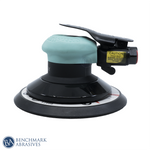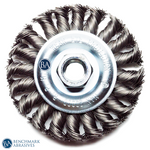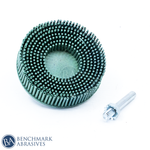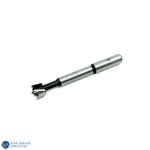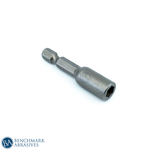How To Cut Ceramic Tiles By Hand?

It would help if you cut the ceramic tile with good, clean edges while carrying out an installation operation. The most straightforward technique to cut ceramic tile is with a wet saw or snap tile cutter for straight cuts of entire tiles. Occasionally, though, a tile cutter is not necessary to cut ceramic tiles. Sometimes, you'll have to manually cut tiles because the area you need to remove is too small for the snap tile cutter to operate correctly. Additionally, a snap cutter is not very useful for cutting curves, narrow corners, or notches. And using it on some mosaic sheets might occasionally be tricky.
The ideal option for those applications is to cut ceramic tile by hand with a specifically made hand tile cutter tool called a tile nipper, also known as tile snips. This is a fantastic and simple solution. With the help of these low-cost, fundamental hand tools, the user can carefully break off tiny pieces of tile, enabling either curved or straight cuts.
Since standard ceramic tiles are made of a relatively thin substance, cutting them with tile nippers is not a difficult task. On thicker ceramic floor tiles or porcelain tiles, which are more challenging than regular ceramic tiles, using a manual tile cutter can be a little tricky. However, with some practice, tile nippers may perform admirably on all types of tiles, with the exception of genuine stone like marble or granite.
Working carefully and using a sharp blade will prevent ceramic tile from chipping while using a wet saw, which is recommended. However, utilizing tile nippers to cut tile without a wet saw can result in tiny, pointy bits of tile flying, so be sure to use the appropriate eye protection.
BEST TOOLS FOR CUTTING CERAMIC TILE
Without tools, cutting tiles is difficult. The following list of five simple items can help you complete your DIY ceramic tile project more quickly.
- WET SAW – Used for quick, precise straight or angled cuts, but requires skill to use.
- TILE NIPPER – Requires some practice to use for minute snips to shape a tile.
- SNAP TILE CUTTER – Used for exactly straight lines; less skill is needed than a wet saw.
- ANGLE GRINDER – Simple to use for angular cuts in challenging areas.
- GLASS CUTTER – Use a glass cutter to cut a few simple lines in the tiles.
HOW TO CUT CERAMIC TILES BY HAND?
STEP 1: CREATE A CUTTING LINE AND MARK IT
Create a cutting line on the tile's glazed face using a fine marker or pencil. The next step is to score the tile along the cutting line using a glass cutter for curved or notched cuts or a snap tile cutter for straight cuts. The objective is to mark a boundary line on the tile's glazed face with each tool for the area you will cut out with the nippers. In this manner, as you snip sections off, the tile will break into a straight, clean line.
Place the tile on the tool's bed before running the scoring wheel over the marked cutting line to score with snap cutting. After removing the tile from the snap cutter, cut the tile using the nippers. Using a small glass cutter tool with a sharp metal cutting wheel that will score the tile's glazed surface is the simplest way to achieve the cutting line for curved cuts or minor notches.
STEP 2: START TO NIP
For straight cuts, it is typically better to begin at the waste area corner and proceed outward and across the tile, removing a little piece of tile with each nip while holding the nipper at a slight angle. Avoid eliminating large portions of tile because doing so could cause the tile to break in an uncontrolled manner and not in the desired location. While using this cutting tool, patience is essential.
Making a curved cut is best accomplished by using the cutting jaw's corner to nibble away the leftover material in tiny pieces. Overly large bites can crack the tile thoroughly. Start in the center of the material to be removed and progressively proceed inward and outward to the scored cutting line while making a concave curved cut. Start at the corner edges of a convex curve and work your way toward the scoring line.
STEP 3: KEEP MAKING THE CUT
Continue cutting gently as you remove the waste area as you walk across the tile. Change the tool's alignment so the jaws are cutting parallel to the cutting line (for a straight cut) when you are less than 1/8 inch from the cutting line. Hold the tool so the cutting blades are tangent to the indicated cutting line while cutting a convex curved surface. With the tool still positioned at an angle to the cutting line, continue making tiny nips all the way around the interior of the cut for a concave curved cut. Again, persistence is the key to achieving success.
STEP 4: COMPLETE THE EDGE
Take tiny nibbles with the nipper tool as you complete the cut, bringing the cutting edges all the way up to the designated cutting line. In most cases, the scored line will be where the glazed surface cleaves. If the cut edge is visible, you can use quality abrasives tile stone (rub stone) to smooth down any rough edges.
It's usual to experience one or two false starts while using a tile nipper for the first time. However, if you work patiently, you will finish up with a beautiful, clean-cut tile edge. Before making any cuts that will matter, practice with some scrap tile. After a bit of practice, using a tile nipper is pretty simple.












